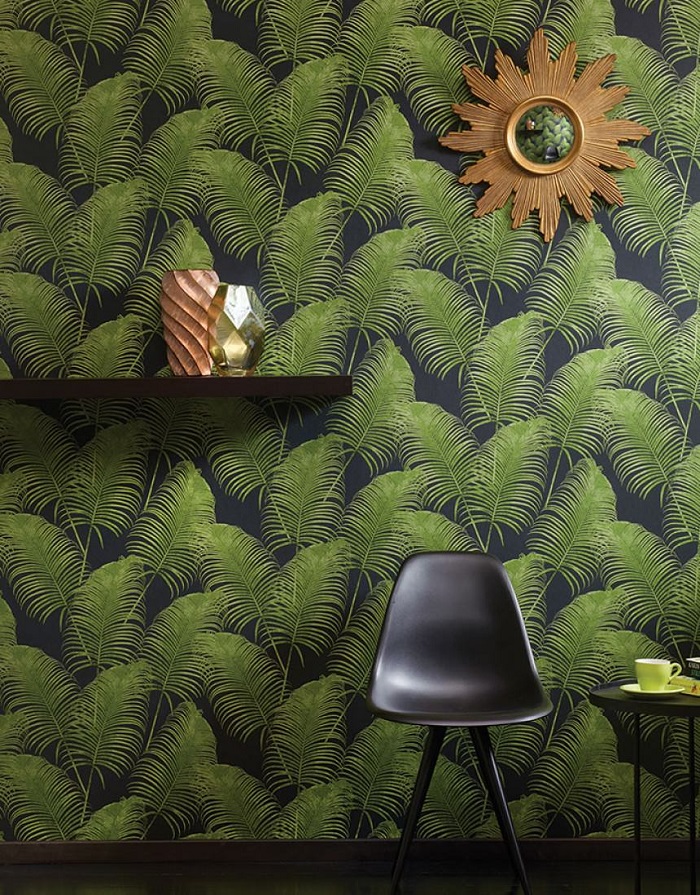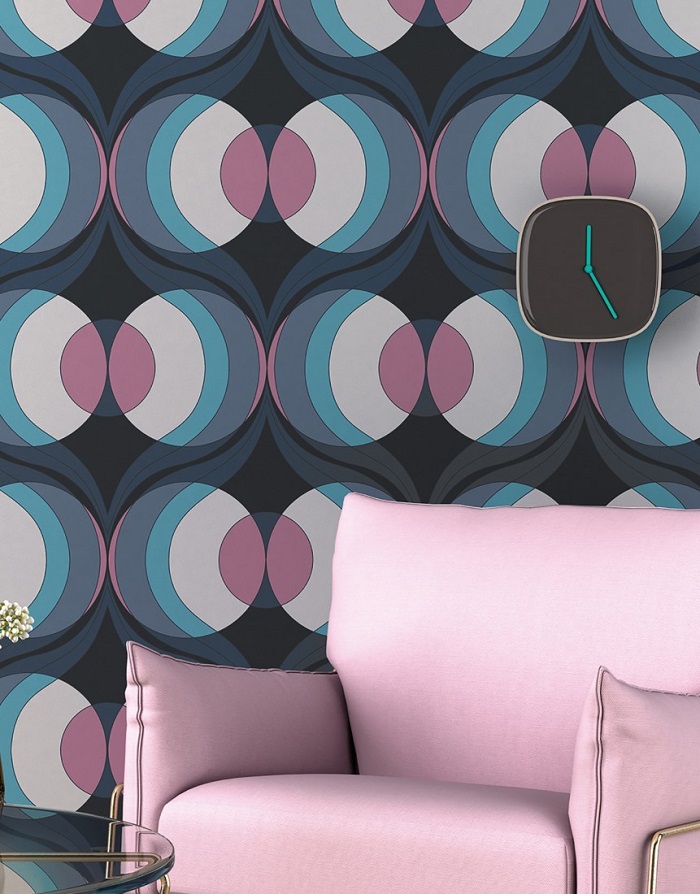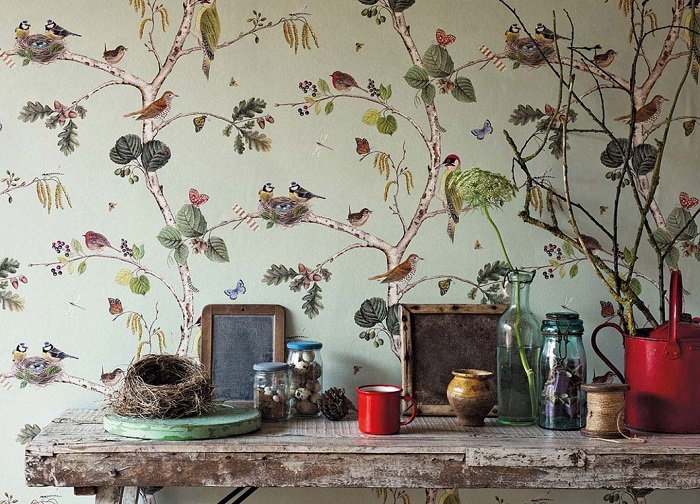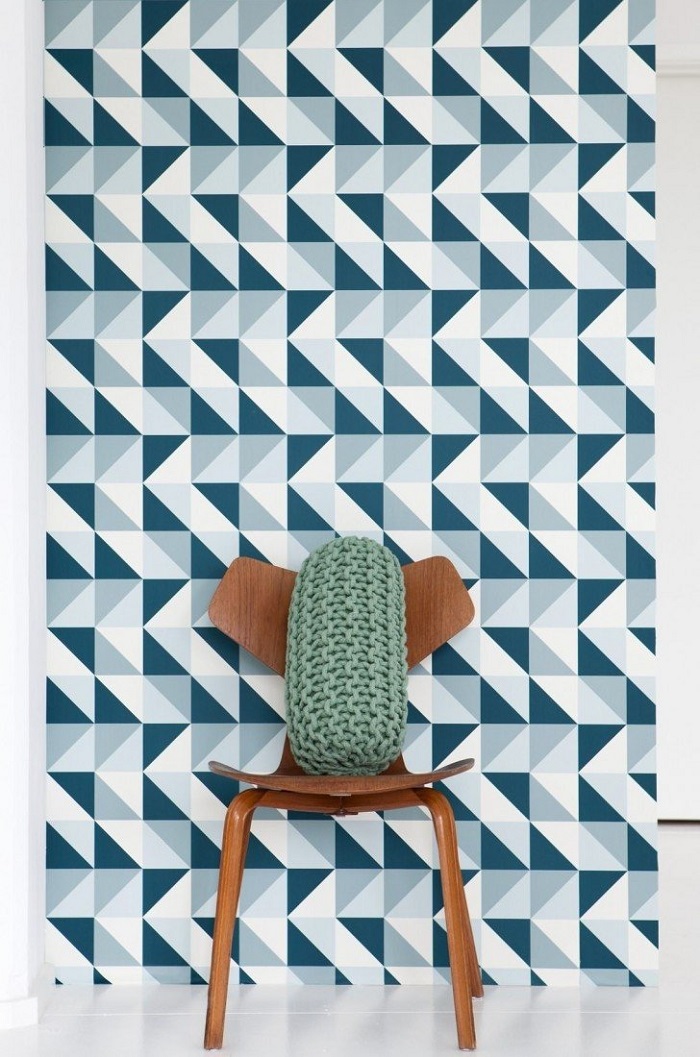They are everywhere, from the trendy series on Netflix you have been avidly following, to the background of a glorious photoshoot in your favourite magazine or behind the till of that hipster cupcake bakery that just opened down the road.
Wallpaper is the success story of decorating, having made an incredible come back onto the interior design world. For decades they were a staple of every household, the appealing but slightly conservative background to every living room or bedroom in Europe and North America before and after the war. Then the 1960s and 1970s arrived and everything changed. Bright colors were in, big, bold motives and patterns took over, redecorating the urban landscape. Nobody wanted to stare at a boring white wall on those days, the spirit that animated the incredible primary colors of the scenes of the Beatles movie “Yellow Submarine” is a perfect example of that visionary time.

That time slowly fated away, to give space to the calm and slightly boring monotony of Scandinavian minimalism that dominated the interior design landscape for a good 20 years. Every household started to look like an Ikea showroom, modern, functional, but a little bland.
The last few years have seen instead a revival of originality and boldness, that found its perfect partner in modern wallpaper. Suddenly a splash of color returned to our walls, whether in boutique, restaurants, bars or living rooms. People started to look back at the era that defined this style and that led to the comeback of vintage wallpaper.
Vintage Wallpaper
As we mentioned earlier, the visual design of the 1970s vintage is characterized by the use of very strong colors. Bright green, turquoise and golden yellow defined the tone, leaving aside more understated hues, like black and white. If you want to maximize its effect, a vintage wallpaper needs to define the color code of the environment. Furniture and accessories need to complement it and they should be picked for their material qualities: glossy, glass and leather but also metal and wood. Furniture design back in those days tended to use plastic materials and a copious amount of furniture, creating a playful atmosphere that brought joy and radiated sunshine.

The term vintage wallpaper originates from the French term “vintage”, originally used to indicate a vintage wine, prized precisely because it has been aged. Nowadays this defines more generally an object of another era, which is rare because no longer in production. Original vintage wallpaper can be rare and expensive to source, as its stocks have been dwindling. It might therefore difficult to find the model you seek in the quantity you want. Luckily modern wallpaper can now reproduce the patterns and feel of that period, while using modern material and production methods
Contemporary Wallpaper Trends
Contemporary wallpaper available is a far cry from the old, primarily paper-based varieties sold decades ago. Technology and production methods have evolved, and the materials used in modern wallpapers are far more varied, durable and dynamic than those from the 1970s. Having discussed about the comeback of vintage wallpaper we would like to take a peek into the current trends, looking ahead to 2020.
Everything BOTANICAL is still going to be extremely trendy. Huge flowers on a solid color background or smaller leaves patterns reminiscent of Asian vibes, with subtle, stylized and abstract designs are a very popular choice, creating a calm and relaxing atmosphere as you bring nature into your home.

Evolving from the above style TROPICAL style has emerged as the decorative choice for those who just can’t get enough of pop-style maximalism: flora and fauna of exotic countries with banana leaves, colorful fruits and exotic animals. A perfect match for those craving for a touch of colorful energy in their living quarters.
For those who prefer a more subtle design, the GEOMETRIC style provides modern and clean lines that pleases both lovers of minimalism and fans of vintage 70s designs. Geometric wallpapers should be used if you desire to highlight a modern art piece.

